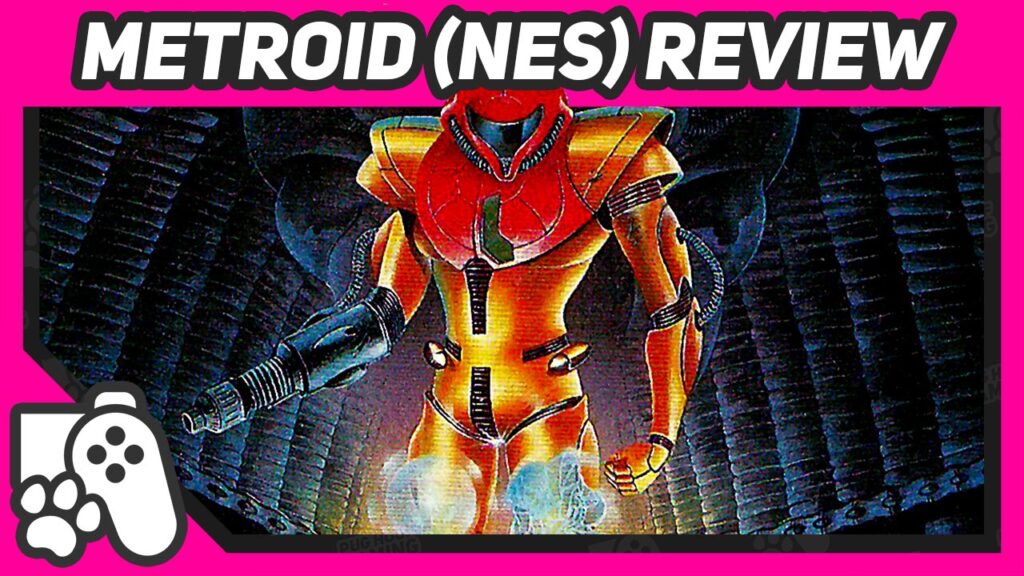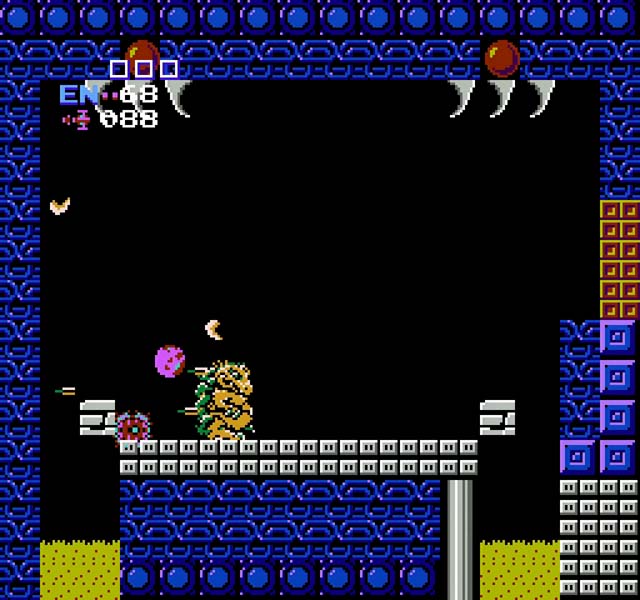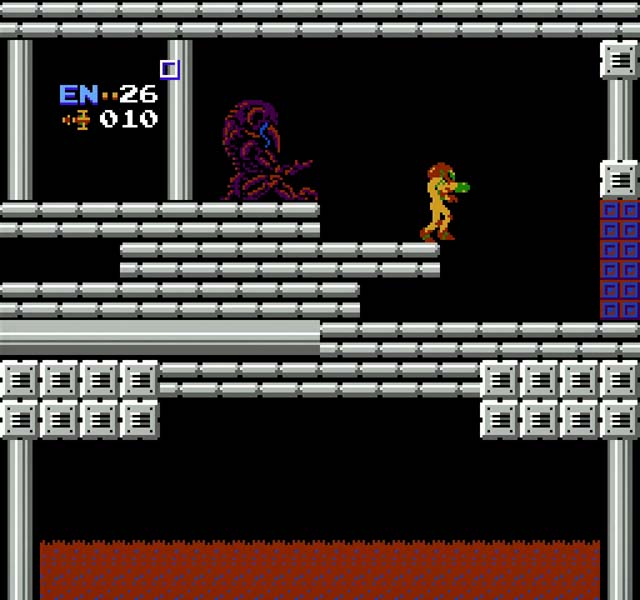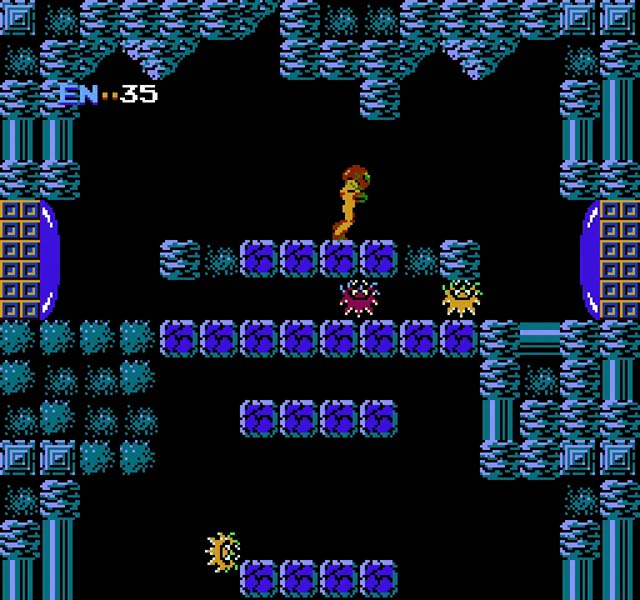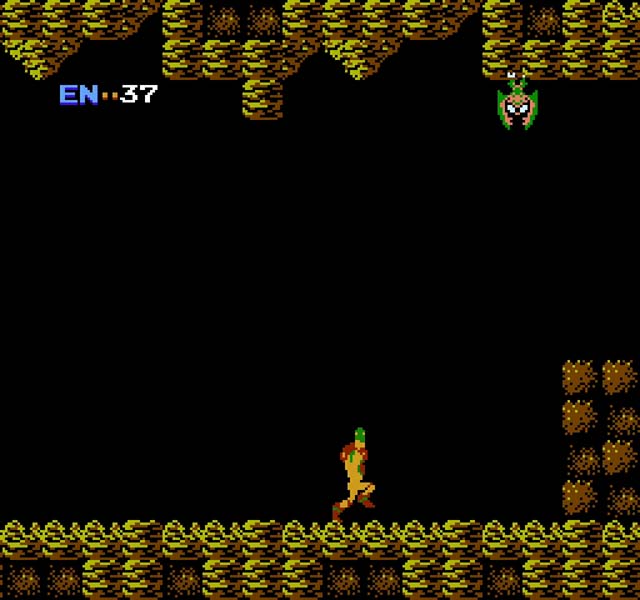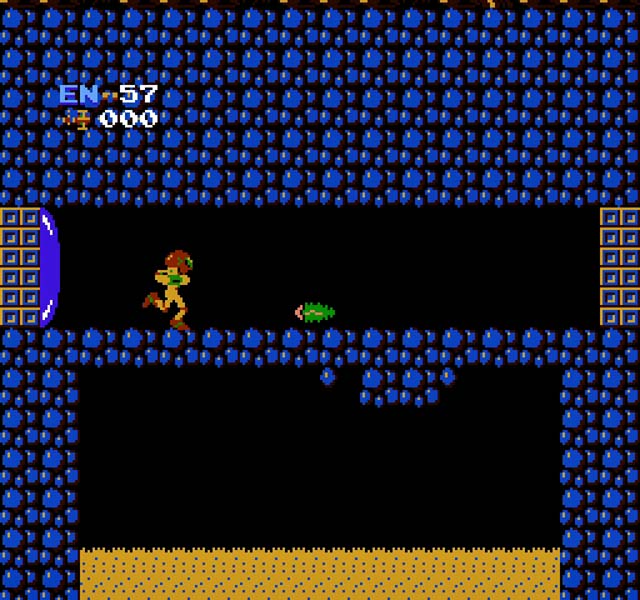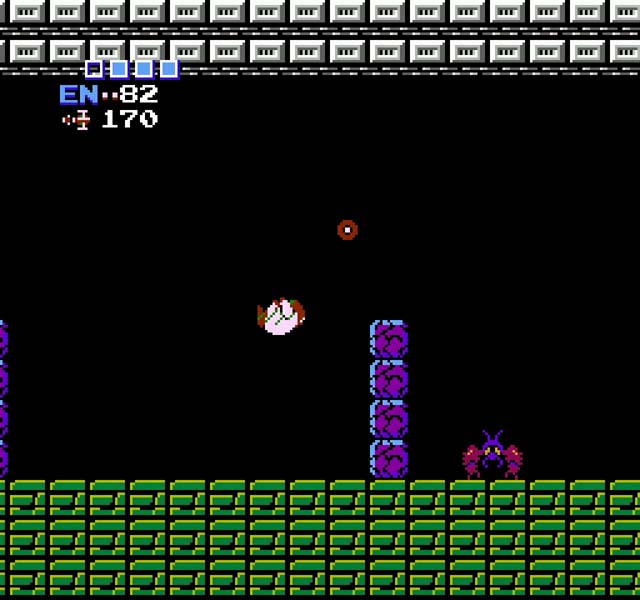The road to Metroid Dread begins as it should – At the very beginning. 1986 was a pretty landmark year for Nintendo. The Japanese release of the Famicom Disk System add-on for their 8-bit console was the original home for many a classic series that started this very year. The Legend of Zelda debuted here, as did Akumajō Dracula – The game that would later be known worldwide as Castlevania. But you know what video you’re watching, so of course, Metroid is also part of those 1986 releases that would evolve into one of the decades-spanning pillars of gaming.
When you look at what gaming was like in 1986, especially on the Famicom – Metroid comes at the point where games were becoming more advanced and starting to break away from the shorter gameplay progressions that were more at home in the arcade. This is where Nintendo start to explore what is truly possible on a home console format, and the slightly enhanced feature-set of the Famicom Disk System gives them a chance to try new things.
And while the Western cartridge-based version of Metroid removes some of those disk-based luxuries, such as swapping the incredibly useful save functionality with an unwieldy password system, and amends certain audio elements that relied on the Famicom Disk System hardware – The spirit and heart of the game remain.
Take a look at that title – A supposed portmanteau of the words Metro and Android. This alludes to the underground tunnels that the game consists of, and the somewhat robotic bounty hunter you play as. And, yes – Protagonist Samus Aran’ identity is kept as a secret, after being infamously misgendered in the original game’s manual.
Metroid Nintendo Game Review – Plot
Our hero is hired by the Galactic Federation to engage in a solo mission on the Space Pirate’s planet of Zebes. These space criminals have obtained a deadly lifeform called a Metroid, and are trying to weaponise these terrifying creatures in order to spread fear into the galaxy. Samus’ job is to crush the Space Pirates, assassinate their leader, the Mother Brain, and destroy their lab alongside any traces of these Metroids.
Playing Metroid in 2021 is a crash course in early game design and one has to make concessions to a title that undeniably looks and plays as a 35-year-old game does. It feels like a very separate entity to the usually more chipper characters and worlds that Nintendo games are known for. Zebes’ rogues’ gallery of alien lifeforms are decidedly more grotesque and look far more imposing than the gormless Goombas and Koopas of the Mushroom Kingdom, while Samus herself certainly looks better equipped to save the day than the impish young Link.
Not that this seems to be the case from the beginning. Sure, unlike Link, Samus actually starts with a weapon equipped and ready to go – But the extremely short-range and limited offensive power of this initial sidearm doesn’t exactly make easy work of enemies – Even the ones located in the first room. There’s also the matter of Nintendo immediately breaking away with typical gameplay progression and requiring you to go left immediately to pick up the first item of the game – Samus’ Morph Ball, or the Maru Mari as it’s called here. It’s a lesson taught very early on, that Metroid isn’t a matter of going from left to right. Combined with the very real risk of failure so early on, players soon learn that they’ll need to acquire better items in order to survive on Zebes, but they’ll have to do the legwork and find out where those items reside. In all honesty, it’s an incredibly intimidating start, and I daresay there has probably been a high percentage of people over the last few decades, dropping out from Metroid due to the initial high difficulty.
Of course, things get a little easier as more items and upgrades are found – But without using a map or guide, most players will struggle to find them all. As a series, Metroid is known for the gameplay cycle of exploring, finding barriers that require a particular ability, exploring further and then finding useful items that allow the player to go back to those previously unpassable blockages and then repeat the cycle. This initial game does indeed introduce that mechanic, albeit in a very primitive form. Provided a player has enough patience (or a map they’ve either found or made themselves), they will eventually be able to find the few required items to progress. However, there are a large number of potentially optional, but incredibly useful items that would be very hard to find without specific knowledge. In fact, there are some incredibly harsh and obtuse barriers that for some players will completely block further progress through the main game. How many players will know to shoot or fire these seemingly normal blocks to obtain the Varia Suit, or bomb this floor and fall through this normally deadly lava to get the Ice Beam? Granted, the Varia suit is an optional item and there are two locations of getting the Ice Beam – But it’s a pretty unfair request to expect a player to find all this stuff by themselves.
Unfortunately, for all the clever game design of nudging the player in a certain direction to find further items and provide the ability to explore further, everything breaks down once the player is almost required to shoot or bomb every single wall tile in the hope of finding the way forward. Without an in-game map, the only way to really know where you are is to make your own, obtain someone else’s map, or rely on the environments art style and music to at least let you know roughly what region you’re in.
On top of that, keeping yourself alive can be a painful experience in itself. As well as obtaining items to power both Samus’ ability to take down enemies and also to explore Zebes further, players will also have to keep their health and missiles topped up – Some enemies occasionally drop health or missile pickups in very small amounts, and this is the only way you can replenish yourself. There are a few areas with endlessly spawning enemies from pipes that can be endlessly killed to get what you need, but even this can be a risky endeavour as they spawn very quickly and can kill you if you’re not careful. Then, there’s the amount of time you’ll need to spend farming these items, which can be a problem if you’re trying to finish the game as quickly as possible to get better endings (with quicker times giving you a better glimpse of Samus’ true identity). Really, enemies don’t become truly manageable until you get the Screw Attack that turns the normal diagonal jump into a practically overpowered offensive manoeuvre in itself, but that is, of course, the player finds it.
Metroid’s biggest problem is giving you too much exploration and not enough information to funnel you towards a different path. Zebes is absolutely huge, labyrinthian and full of multiple confusing pathways, some looking identical. The Brinstar region acts as a pathway between the rest of the game’s areas, with the aim being to find items in this area and tool yourself up enough to be able to fight two bosses, Kraid and Ridley, in their respective hideouts. Once both foes are defeated, the bridge to the Tourian region will appear and the player can go toe to toe with the Metroids and Mother Brain.
However, a new player doesn’t know any of this, especially if they don’t have the game’s manual. As an early NES game, a lot of the critical information the player needs is only given outside of the game itself. The manual explains the need to find more items, what those upgrades are, the game’s requirement to defeat Kraid and Ridley before being able to access Tourian, and even gives a very rough map of Zebes. Without knowing all of this information, the player is at a huge disadvantage.
But for those playing this game in a world where this information is readily available via the Internet, these are all admittedly low barriers, depending on how you see it. I’m not going to lie, as someone who has already played and finished the game a few times, I came into this review armed with a map and a rough path of where to go – But even with all of that info, I still ran into problems due to some punishing difficulty. Even normal enemies are tricky to kill, let alone the game’s three bosses, which can take an embarrassing number of Missiles to be defeated. If you run out, you’ve basically got to run away and spend ages farming enemies for missiles before trying again – So it’s absolutely essential to get as many Missile expansion upgrades as possible.
The only other alternative is death, which is a painful experience in more ways than one. On its original Famicom Disk System release, Metroid was armed with a save game function that would activate during a Game Over. However, in the Western versions, this was replaced with an awfully complex passcode system of 24 characters that rely on alphanumerical characters with both upper and lower case letters. You’d better hope you’ve written down those passwords correctly, or your progress will be completely lost. It was horrible back then and it’s horrible now.
There are definitely some rough edges to Metroid, with the game being infamous for several glitches that can be used and abused for sequence-breaking purposes – Which is truly fascinating to see for yourself as it’s almost an artform to see the way some people have made some insane speedruns. I’ve been watching videos of people finishing the game in less than 10 minutes, and it’s incredible to see. As for more irritating technical issues, I found it extremely annoying when I would fall into the energy-sapping lava and struggle to get out because I was stuck under part of a brick. Then, there’s the annoying issue where during the animation when travelling through a door, you can still be damaged by enemies and their projectiles.
I also find Samus quite hard to control, with jumping being especially frustrating. It feels very loose and uncontrollable at points, with the main problem being the two different ways you can jump in a diagonal direction. If you stand still, jump up and then move left or right while in the air, you have a little more control, but if you jump diagonally then Samus’s somersault can be very fiddly to control with any real accuracy. When you’re traversing an environment with a lot of lava while also trying to avoid enemies, that’s a real problem.
I think that’s enough negativity, for now, so let’s talk about what Metroid does do incredibly well, starting with the graphics. I’ve already talked about how this game is markedly different from other Nintendo games, with enemies that are considerably darker and more terrifying by comparison. There is nothing here that doesn’t scream “I am here to kill you”, but the setting itself also tells its own tale through its design.
Zebes’ subterranean environments might not be particularly detailed in terms of background dressing, but careful use of a limited array of environmental tiles do well to differentiate each region of this alien world from one another. But, no matter the look and feel of each area, from Brinstar’s ancient caverns to the technological nightmare of Tourian – The theme of being alone in a claustrophobic, dangerous, harsh alien environment is all here even in the primitive visuals and world design.
Which all extends to the sound design, too. That title theme is a piece filled with both eerie dread and wonder in equal amounts, while the signature Brinstar theme is a strident piece that makes the player feel like they’re at the beginning of an incredible journey. However, once they leave the relative safety of this opening region and explore the rest of Zebes, the soundtrack takes a decidedly more sinister and foreboding role. Norfair’s theme consists of a very dark bassline and a dirge-like melody that wouldn’t sound out of place if it was sung in a gregorian chorus with an organ-led backing. Both Kraid and Ridley’s hideout themes are menacing enough to put you on edge, while Tourian’s track definitely tells you that you are in danger and you are absolutely at the closing moments of Metroid and are about to face whatever big bad is standing in your way to the end of the game. But, in between those more traditional forms of music accompaniment, the piece of music played during Chozo item rooms seems particularly unnerving. Here, these disparate notes tell you that even in a place that usually provides a powerful item and a breather from the danger happening outside, this place isn’t exactly safe.
Going back to gameplay matters, while I mentioned that the focus on exploration is a little unrefined compared to later Metroid titles, you can definitely appreciate that this is where it all began, even if it isn’t consistent throughout the entirety of the game. For 1986, this is bold game design, and every aspect of Metroid comes together to really make you feel like you’re alone and at the mercy of an alien planet and its hostile inhabitants. For all of my issues with some of the more obtuse methods of obtaining items, this entry does at least litter the game world with plenty of pickups that can be found without trying. You’re never too far away from a missile upgrade out in the open, a new weapon or skill, or the occasional energy tank. Each pickup makes you feel a little less vulnerable, and maybe even gives you a little more confidence in your chances of defeating Mother Brain and getting out alive.
And when you do finally escape Zebes in the nick of time, the game’s manual is pretty clear that the ending you get is directly connected to the time taken to finish the game. This is another pretty unique feature, that greatly encourages the player to replay the game to get better times and therefore, a better ending. Granted, the only difference is what state of undress Samus is in, but at least getting the best two endings (for finishing the game under three hours, or one hour, respectively), allow you to play as Samus’ true armorless form when the player presses Start during “The End” screen.
Truth be told, Metroid is quite hard to recommend to series newcomers. If anything, I would skip this game entirely if you’re looking to discover or rediscover the series, and only come back to it to see where it all began. Unfortunately, it just hasn’t aged well, and with the existence of Zero Mission on the Game Boy Advance, there’s even less reason to go back (even if that remake has a few problems of its own, but I’ll tell you more about that when I get to it). I admire this game for everything it’s given us, but after playing through the game for this video, I feel like I probably don’t need to play it ever again. I don’t hate this game, I don’t even dislike it – It’s just a casualty of being bettered by its successors.
And of course, next time I’ll be talking about its direct successor, when the Return of Samus occurs on the humble Nintendo Game Boy, of all things. Here, we’ll be hunting down the Metroid menace on their home planet of SR388 and ensuring the extinction of this deadly race – Or will we?
Thanks for reading this Metroid Nintendo game review, and I’ll see you soon for Metroid II: Return of Samus.
